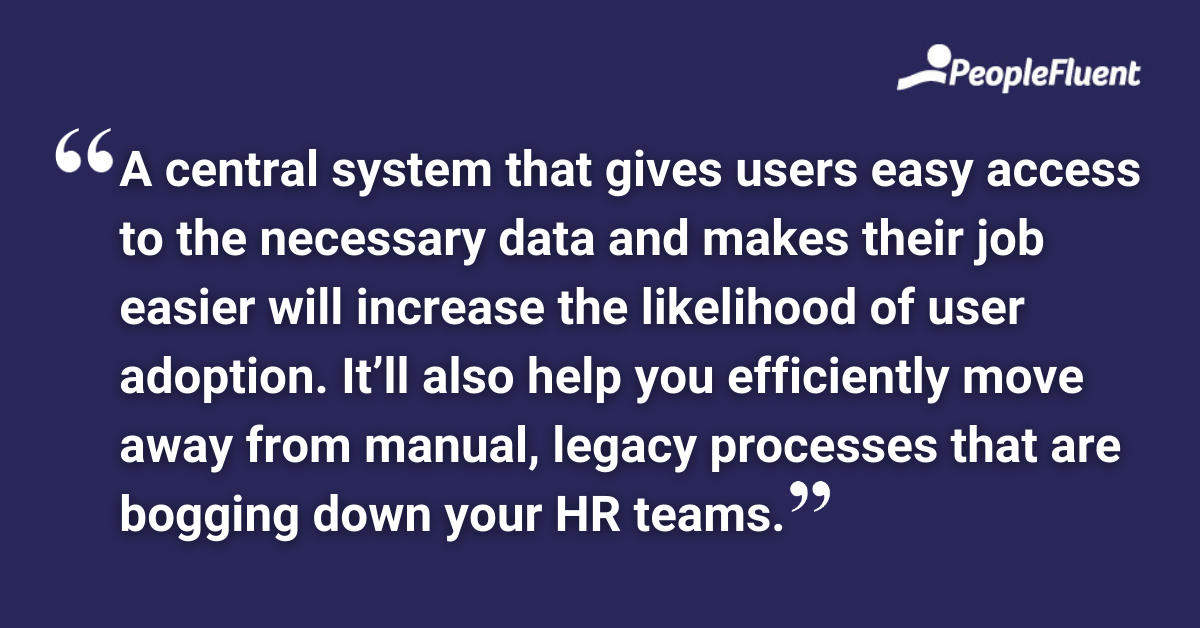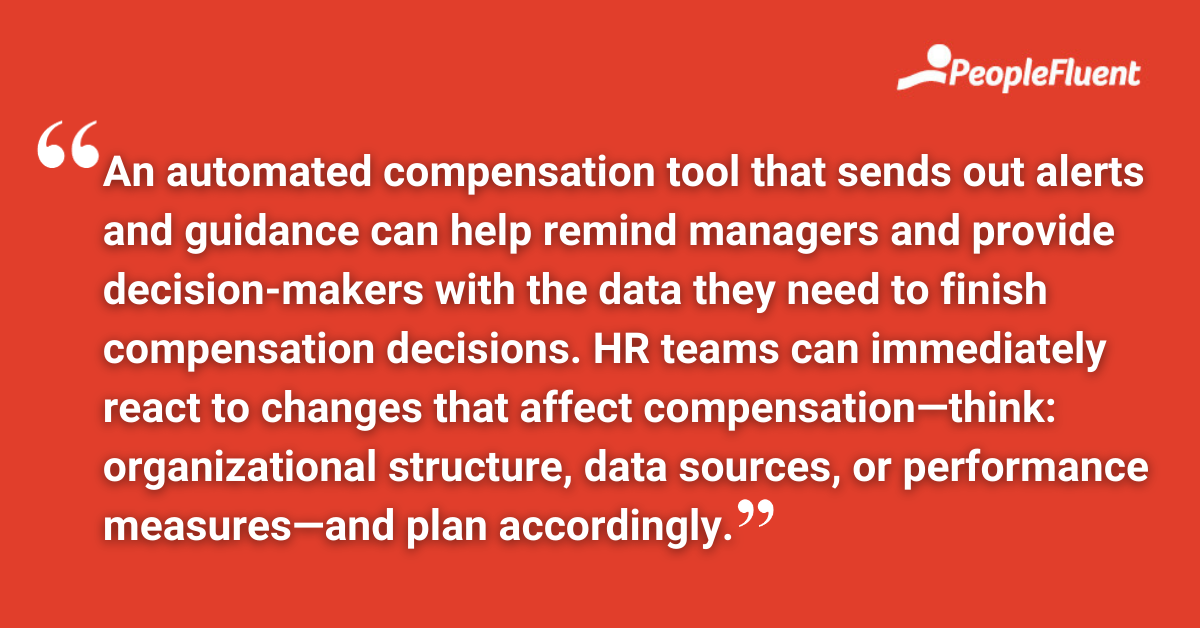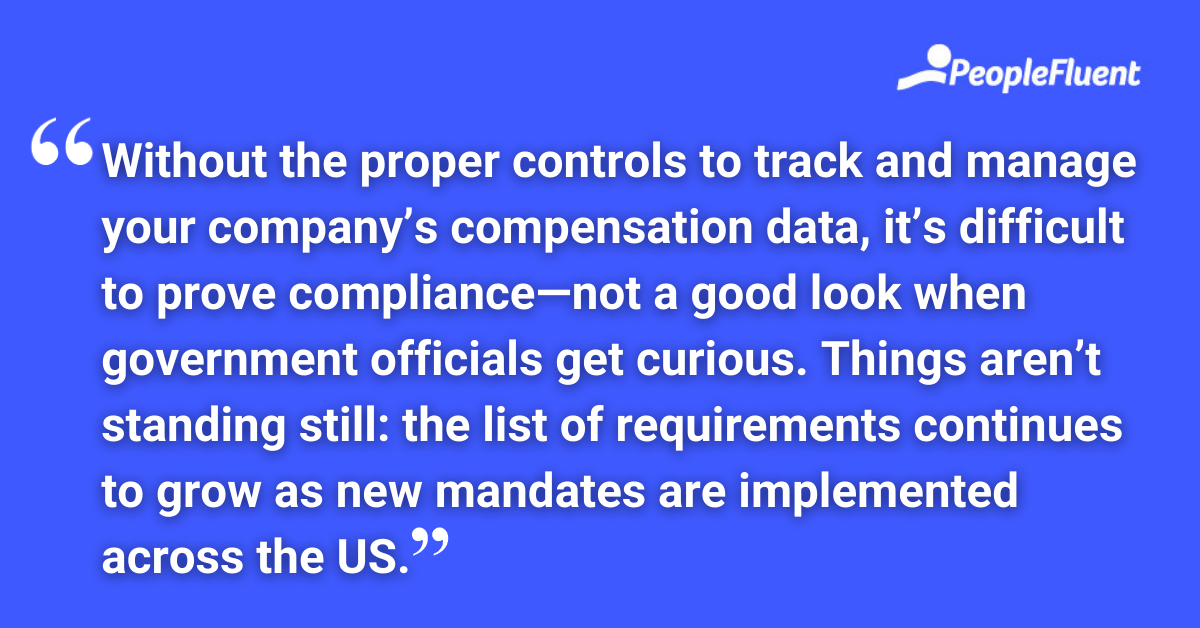Published: May 24, 2022Time to read: 5mins Category: Compensation
3 Reasons Why You Need Automated Compensation Management
Talented, skilled employees are central to the success of any organization. Businesses with robust compensation and benefits plans have a better chance of retaining their top performers, but strong plans only get you so far. You also need to be able to accurately discern who your top performers are, how everyone is performing, and whether or not your compensation plan rewards everyone in your workforce fairly.
To achieve this, you need the right data. An automated compensation management system can give you the knowledge you need to make informed decisions, but that’s not the only advantage of going beyond spreadsheets and using automated software in your organization.
We’ve identified three additional benefits of switching to automated compensation management.
1) You’ll Have Centralized Compensation Data
Onboarding any HR technology system is tough, but it’s highly recommended that you encourage user adoption early on. A central system that gives users easy access to the necessary data and makes their job easier will increase the likelihood of user adoption. It’ll also help you efficiently move away from manual, legacy processes that are bogging down your HR teams.
Keep in mind, compensation teams are responsible for sending government-mandated reports. They compile these regulatory reports using multiple data sources, which can increase risk and lead to decreased efficiency. A central hub that houses your compensation data will help line managers and business leaders gain the real-time visibility they need to be proactive.

MORE FROM THE BLOG | ‘The Key to Fairer Compensation & Greater Retention’
2) You Can Make Agile Compensation Decisions
We get it. Creating and sticking to an agile workflow can be tough to get right while everything remains in flux, especially when business decisions require feedback from multiple stakeholders. For example, data points such as compa-ratio and position-in-range (PIR), which are generated from informed market data, can help a manager to decide whether an employee needs an adjustment to minimum or a lump-sum award if the employee is over the maximum range. This can also lead to cost savings for the organization as a whole. Having a more comprehensive understanding of employees’ salaries and how they compare to market averages can help you determine where and how to best spend your budget.
An automated compensation tool that sends out alerts and guidance can help remind managers and provide decision-makers with the data they need to finish compensation decisions. HR teams can immediately react to changes that affect compensation—think: organizational structure, data sources, or performance measures—and plan accordingly.

JUST FOR YOU | ‘6 Ways to Align Compensation With Organizational Goals’
3) You Can Keep Information Secure With Data Integrity
It’s more important than ever to keep confidential information secure—a big challenge if you’re only managing compensation with spreadsheets. That brings us to the topic of data integrity: the maintenance of, and the assurance of, data accuracy and consistency over its entire lifecycle. Data integrity is a key part of the design, implementation, and use of any systems responsible for storing, processing, and retrieving data.
Without the proper controls to track and manage your company’s compensation data, it’s difficult to prove compliance—not a good look when government officials get curious. Things aren’t standing still: the list of requirements continues to grow as new mandates are implemented across the US. Managing compensation with spreadsheets can expose your organization to significant compliance risks, such as:
- Errors that go unchecked may not be detected until there’s an audit by the Office of Federal Contract Compliance Programs (OFCCP). Human error is especially likely when users are less confident using the templates
- You’re more likely to be unable to prove consistency across pay grades because you’ll be using multiple data sources across departments and systems
Here’s another thing to consider: when you have a large number of spreadsheets moving around the company, it increases the risk of a security breach, especially when a majority of employees are working from home. Now’s definitely not the time to neglect data integrity. Make it a focus throughout the compensation planning process.
Start with a deep understanding of how your company’s private information is managed and stored. This helps your organization develop the necessary controls (if they don’t already exist) and record-keeping capabilities.

YOU MIGHT ALSO LIKE | ‘4 Dangers of Only Using Spreadsheet Templates for Compensation Planning’
The Bottom Line
There’s a lot that goes into compensation management. Having an automated tool to manage and secure your data means saving you time and resources, not to mention helping you retain talent in your workforce.
Your compensation management plan isn’t the place to take risks. Invest in software that will centralize your data, help you make agile decisions, and secure sensitive information by partnering with a vendor that understands the importance of a strong and secure compensation plan.
RELATED READING | ‘RFP Checklist for Compensation Pros’
See What an Automated Compensation Management System Can Do for You!
To learn more about the benefits of automated compensation management, download the ebook ‘Going Beyond the Merit Matrix: How Automation Is Changing Compensation Management.’ Want to see it in action? Request a demo today and discover how PeopleFluent Compensation can automate your compensation processes.